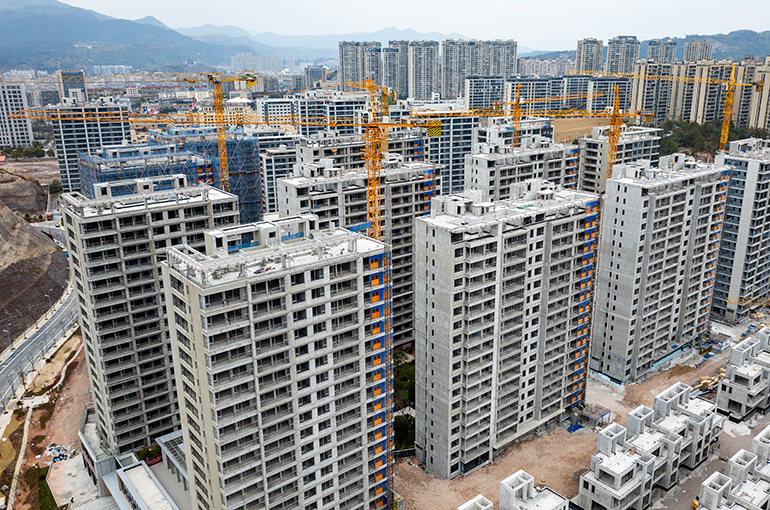 China’s Housing Market Recovery Hinges on Mass Clearout of Builders
China’s Housing Market Recovery Hinges on Mass Clearout of Builders(Yicai) Aug. 14 -- The measures China implemented to mitigate real estate risks, such as the government’s acquisition of affordable homes to stabilize prices, have already shown positive effects. However, these measures cannot save most real estate enterprises from fate.
In the future, more than 80 percent of real estate and construction companies will exit the market. A proper stabilization and rebound in housing prices will likely happen only after a large number of real estate companies have transformed, and the excess supply has been cleared.
China’s property investment has fallen double-digit for several years in a row, a trend that will likely continue for much longer because the era of rapid urbanization driven by the population boom is over, and many cities expect population outflows.
China is issuing special-purpose bonds worth trillions of Chinese yuan, equal to hundreds of billions of US dollars, to resolve real estate risks. Its current policy focus is on guaranteeing the delivery of presold homes, preventing financial risks, and avoiding macroeconomic risks, rather than simply bailing out or protecting real estate companies.
From an offshore perspective, when urbanization enters its final stage, most real estate companies either exit the market or transform into professional property managers. Others vanish from the scene entirely.
The development trajectories of the United Kingdom, the United States, and Taiwan show that from the moment urbanization hits the inflection point, the number of real estate companies typically decreases by 80 percent to 90 percent from the peak period, as most of them exit voluntarily, while others go bankrupt.
Most of the remaining real estate firms transition to other industries, such as finance and elderly care.
The same applies to construction and urban investment companies, with over 80 percent of them needing to transform to survive. This process is bound to be fraught with challenges.
Some Chinese real estate and construction enterprises have just begun their transformation path, while most have not yet started. As long as these massive entities and their enormous production capacities remain, the Chinese property market will not be thoroughly cleared. But as soon as housing prices slightly rebound, the huge excess supply will inevitably re-emerge quickly.
Relying solely on fiscal bailouts to resolve real estate debt risks caused by market behaviors is unsustainable and unreasonable. Their true resolution must depend on stabilizing and recovering prices on the asset side, which would also allow for a more orderly transition and exit of real estate, construction, and building materials companies.
Besides increasing residents’ disposable income, promoting population growth, attracting people to cities, controlling land supply, and intensifying interest rate cuts, China should also take advantage of the significant room for policy maneuvering to drive the true stabilization and rebound of house prices.
For example, China could prohibit local governments from imposing restrictive measures on the purchase of commercial properties, reduce various real estate transaction taxes, and suspend the pilot property tax.
The trajectory of China’s housing prices will be different from that of the past 20-plus years and also from that of 2009. At this point, it would be a great achievement just to stabilize prices, as a sustained rebound will be difficult in most cities.
(The author is Teng Tai, the head of the Wanbo New Economic Research Institute)
Editor: Futura Costaglione